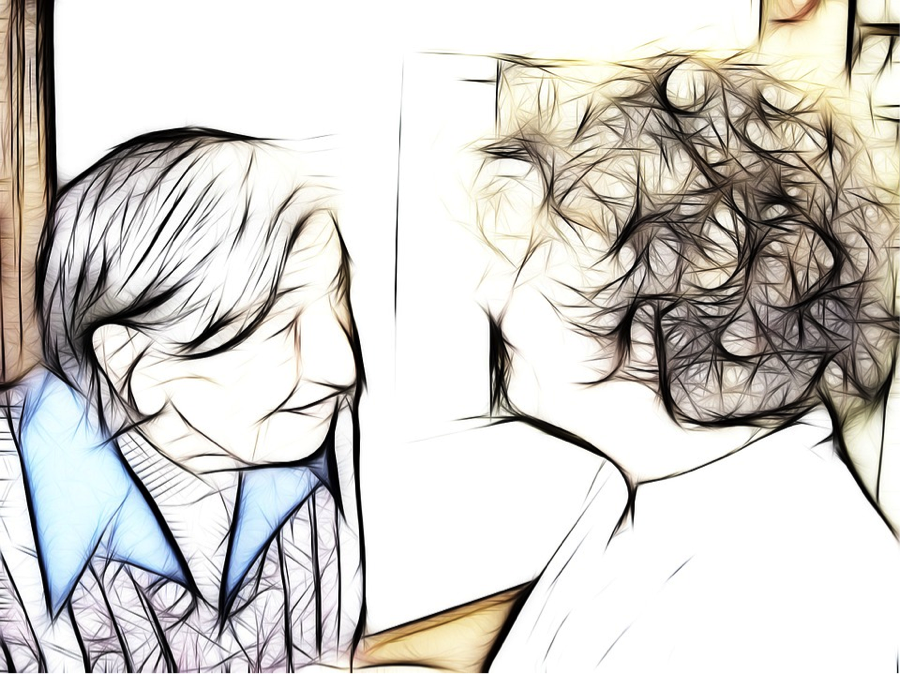Written by: Emily Sully
April 7, 2016
Last week I had the experience of attending a virtual dementia tour, which was eye-opening and inspiring- yet troubling in terms of ‘representing dementia’.
We were greeted by a series of people who immediately sat us down and told us that we were going to learn what it’s like to be old, living with dementia, and residing in a long-term care institution. We were given glasses to wear that distorted our vision to represent having cataracts. Popcorn kernels were put in our shoes, and gloves with popcorn kernels were put on our hands. Two of my fingers were taped together to resemble arthritis. Then, I was put in a wheel chair where I was pushed into the ‘long-term care’ room. I was told by staff to find a blue sweater, put it on, look at the schedule for today, brush my teeth, and a series of other tasks that I immediately forgot.
I was left in my wheel chair, disoriented, in a very noisy place with staff chattering away about their personal lives with the radio on loud. I was periodically pushed around by staff who would openly complain about all of the residents and call me the ‘difficult’ one. I would be placed in random corners to stare at the wall, and wait for the next staff member to come move me. I was force-fed pudding with the staff member spilling it all over my chin without any acknowledgement or care. At times I would be told to join the others in activity, which consisted of child-like toys and word games. Once I started talking to others in the activity, I would be abruptly moved and told to brush my teeth or to stay in the corner alone. At times I would be left in the middle of a room in my wheelchair and then minutes later hear complaints from the nurses for being in everyone’s way. In the few times I was directly talked to by the staff, it was extremely condescending. No options or choices were provided to me and I lacked any sense of control or autonomy.
Experiencing this type of poor treatment that can be said to exist in some long-term care homes was eye opening and truly horrendous. The entire time I was agitated, upset, bothered, bored and voiceless. I only had to endure this for 20 minutes and cannot imagine having to experience this treatment every single day. It really put into perspective what some people may face in institutions.
With that being said however, there were aspects to the experience that left me thinking. For instance, what was the goal of this tour? Was it to become sensitized or frightened? And to what extent does this type of sensitization rely on replicating the negative interpretations of dementia and/or practices of mistreatment that we know can exist in long-term care homes? Although a successful means of disrupting what I thought I knew, I left with a desire for greater discussion about the representation of dementia and more discussion about what can be done to improve institutions and quality of care. Perhaps this is what the organizers intended? In thinking about my experience I would like to suggest that we consider how people with dementia continue to have agency, and ways in which carers and loved ones can ensure they are not impeding on one’s agency or dignity. Although discussing where we can go from here is difficult to do, it is essential in driving change. I might suggest that this type of exercise be accompanied by a second act- one which corrects poor treatment through practices of respect, engagement, and care. In sum, I would stress that we use such teaching moments to generate discussion about future directions and solutions. We need to develop ways to sensitize students and professionals that are not unintentionally replicating negative representations of dementia and poor care practices.

Emily Sully is a M.A. student at McMaster University. Her research interests pertain to improving the quality of care and life of older adults living with dementia.

